


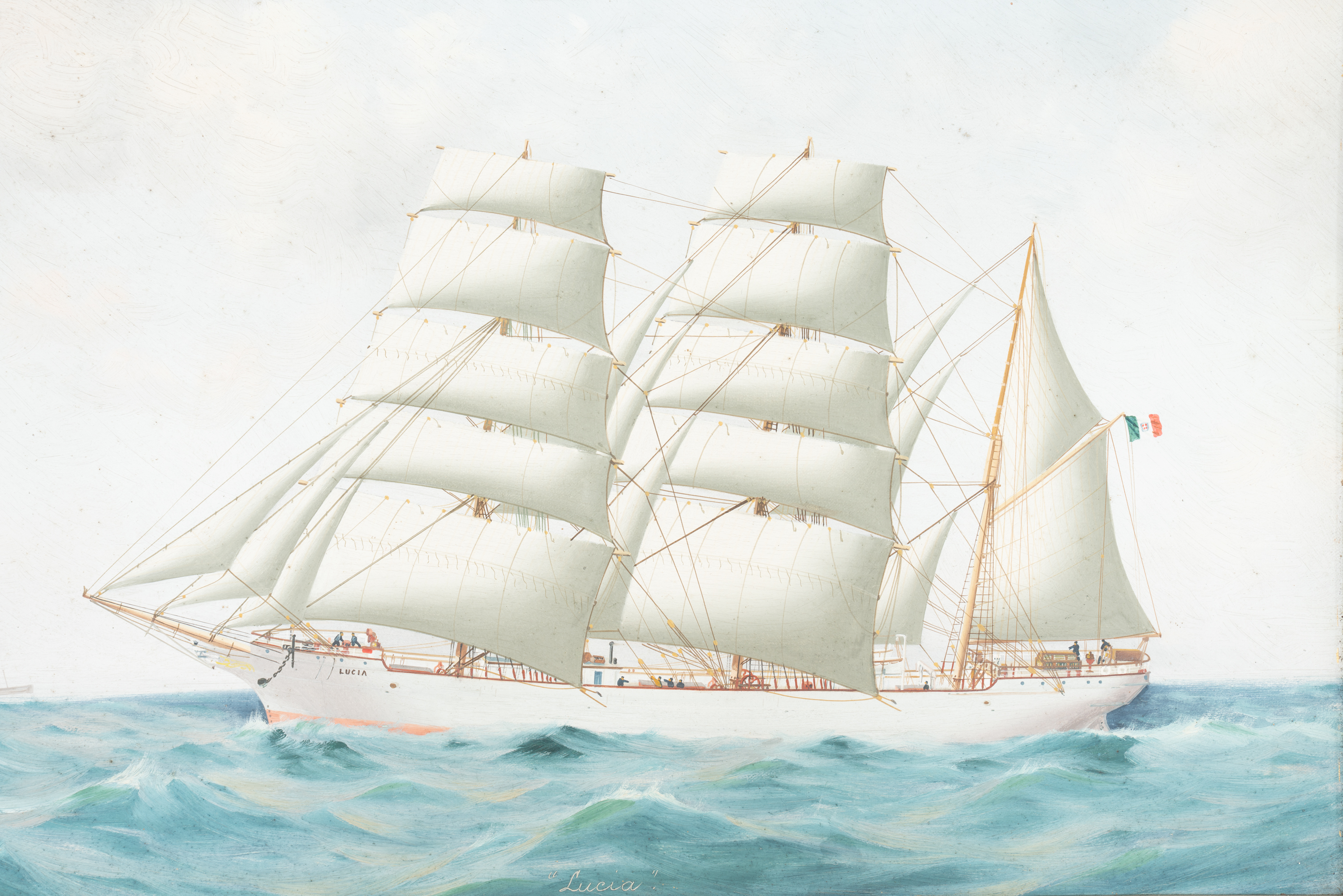


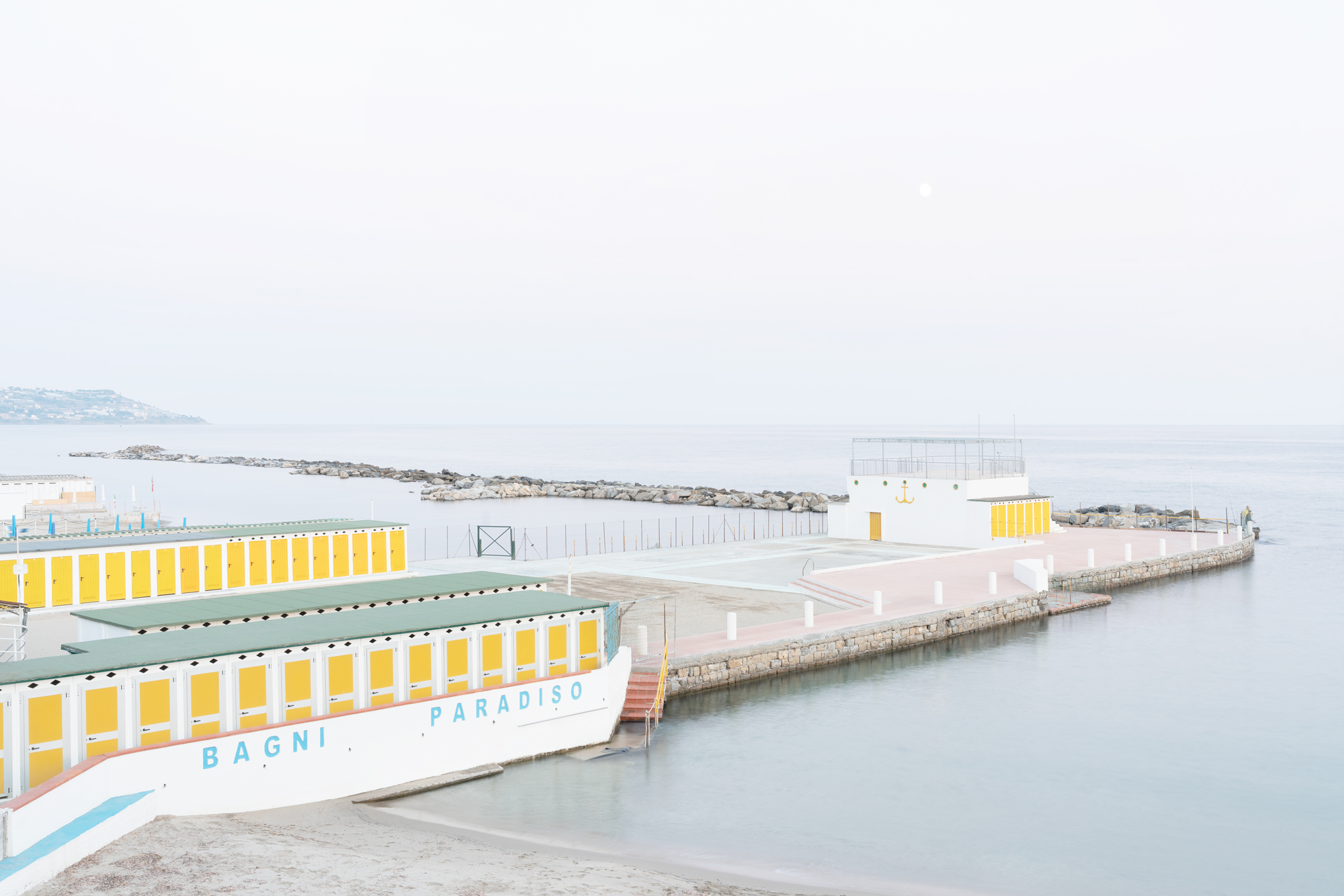




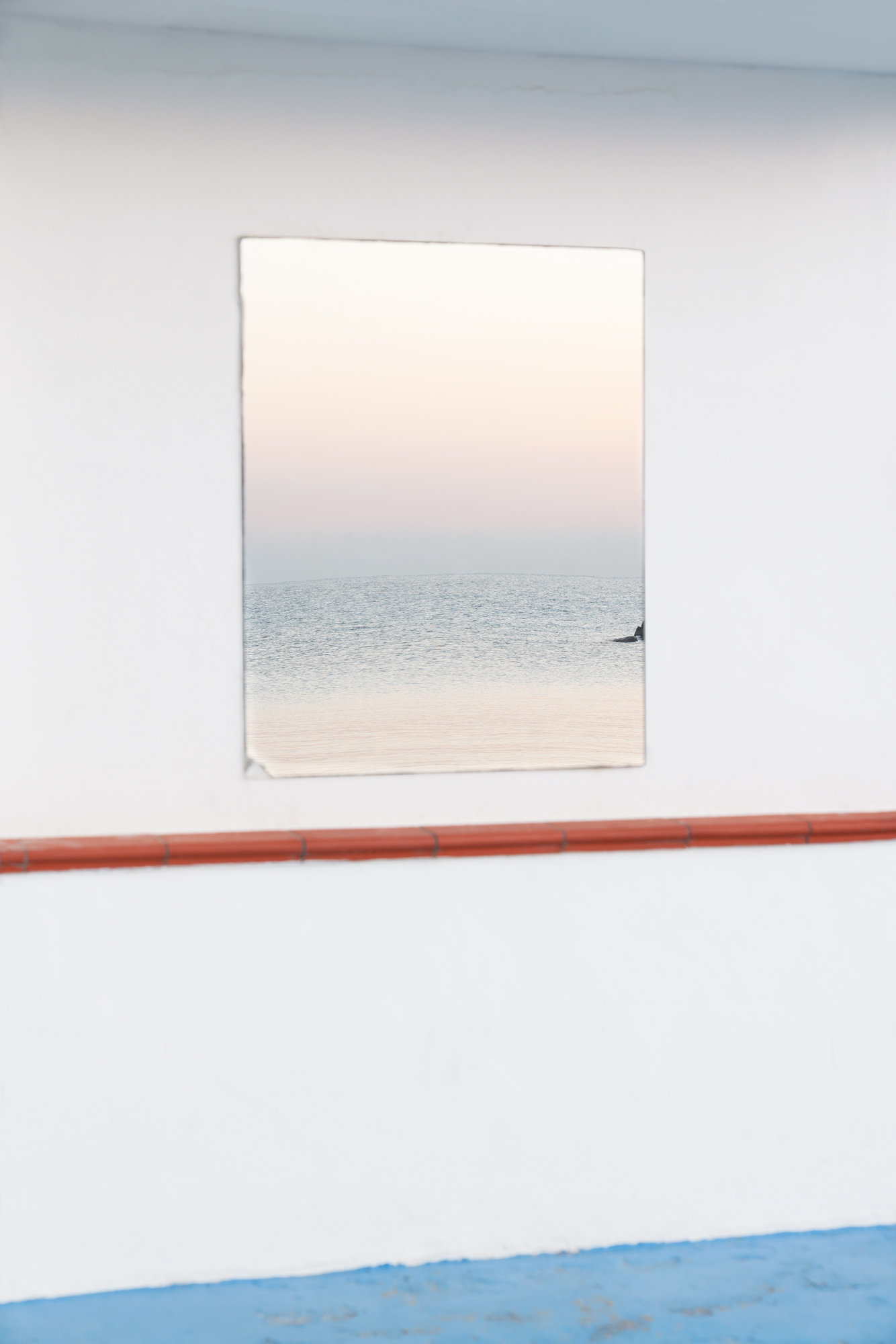




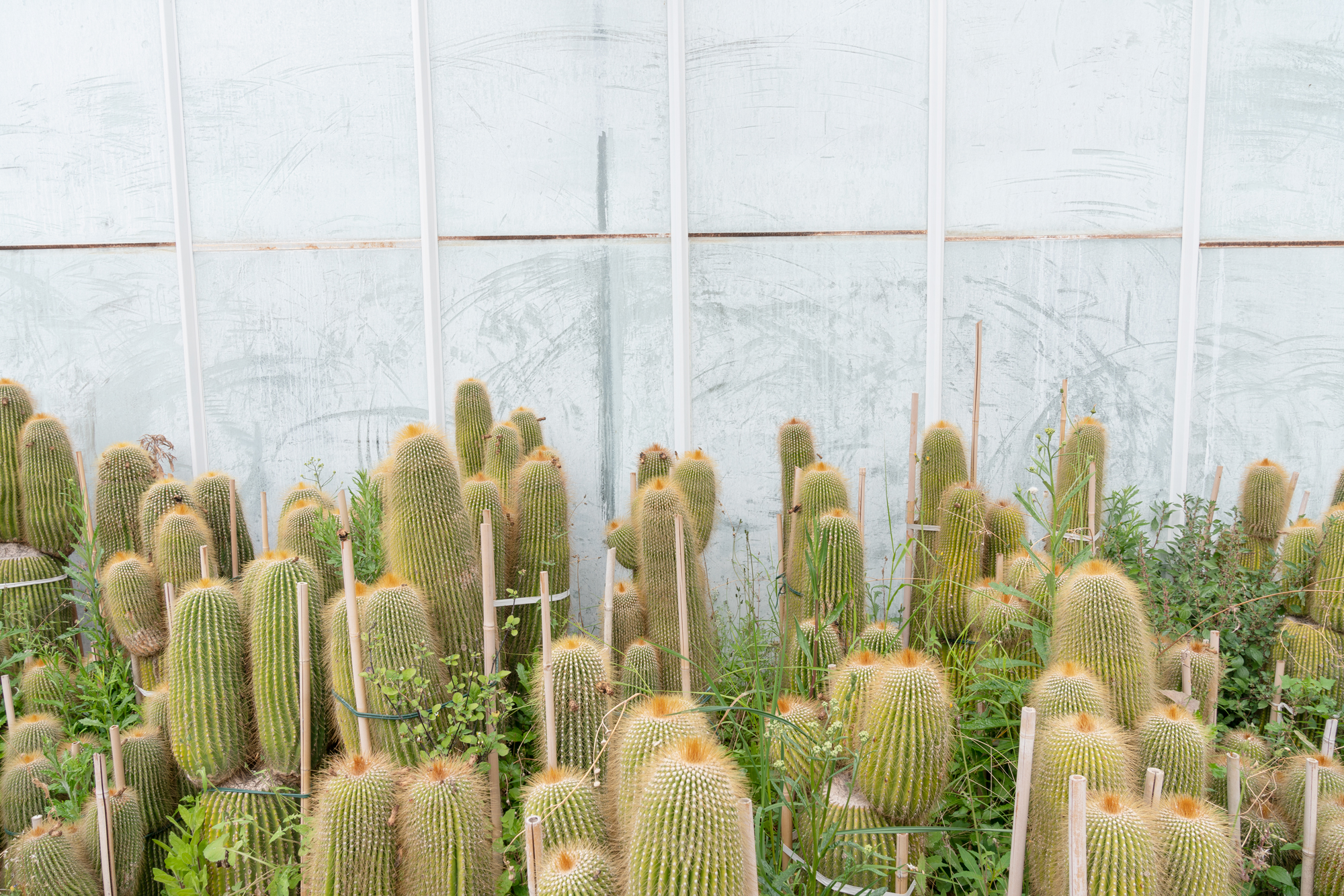
Laboratorio Sanremo è un progetto di arte pubblica. Il progetto è articolato in più fasi che prevedono l’utilizzo di diverse pratiche artistiche: fotografie, video e interviste che includono la partecipazione attiva dei cittadini di Sanremo in progetti site-specific. Il modello proposto lavora su un processo di trilaterazione tra artista, pubblica amministrazione e abitanti del territorio, con il desiderio di rendere i cittadini attori della crescita culturale di Sanremo attraverso un progetto mirato di relazione tra lo spazio privato e lo spazio pubblico.
Il progetto è così articolato:
1. Indagine fotografica
La fase iniziale del progetto, commissionata dal Comune di Sanremo è rappresentata da una serie di immagini realizzate da Paolo Riolzi in occasione di sopralluoghi, incontri, ricerche e dialoghi con alcuni protagonisti del territorio. La ricerca si traduce con fotografie rappresentanti il confine tra architettura, geografia e antropologia urbana.
2. Progetto pubblico
La seconda fase prevede il coinvolgimento dei cittadini attraverso un progetto pubblico dal titolo “Di che spiaggia sei?” realizzato dagli studenti e dalle studentesse del liceo Cassini e coordinato dalle professoresse Lia Motta e Patrizia Magnoni. Consiste in una raccolta di fotografie scattate sulle spiagge di Sanremo, che raccontano la storia dei lidi e delle persone che li hanno abitati.
3. Short film su Alfredo Moreschi
Il video girato nello studio di Alfredo Moreschi racconta, attraverso le parole del fotografo e documenti d’archivio (film e fotografie), l’attività dello studio che opera da cinque generazioni. Il video mostra attraverso le produzione del Cineclub e Fotoclub la Sanremo tra gli anni ‘50 e ‘60.
Il progetto è così articolato:
1. Indagine fotografica
La fase iniziale del progetto, commissionata dal Comune di Sanremo è rappresentata da una serie di immagini realizzate da Paolo Riolzi in occasione di sopralluoghi, incontri, ricerche e dialoghi con alcuni protagonisti del territorio. La ricerca si traduce con fotografie rappresentanti il confine tra architettura, geografia e antropologia urbana.
2. Progetto pubblico
La seconda fase prevede il coinvolgimento dei cittadini attraverso un progetto pubblico dal titolo “Di che spiaggia sei?” realizzato dagli studenti e dalle studentesse del liceo Cassini e coordinato dalle professoresse Lia Motta e Patrizia Magnoni. Consiste in una raccolta di fotografie scattate sulle spiagge di Sanremo, che raccontano la storia dei lidi e delle persone che li hanno abitati.
3. Short film su Alfredo Moreschi
Il video girato nello studio di Alfredo Moreschi racconta, attraverso le parole del fotografo e documenti d’archivio (film e fotografie), l’attività dello studio che opera da cinque generazioni. Il video mostra attraverso le produzione del Cineclub e Fotoclub la Sanremo tra gli anni ‘50 e ‘60.
Laboratorio Sanremo is a public art project. The project is divided into several phases which involve the use of different artistic practices: photographs, videos and interviews which include the active participation of the citizens of Sanremo in site-specific projects. The proposed model works on a process of trilateration between artist, public administration and inhabitants of the area, with the desire to make citizens actors of the cultural growth of Sanremo through a targeted project of relationship between private space and public space.
The project is structured as follows:
1. Photographic survey
The initial phase of the project, commissioned by the Municipality of Sanremo, is represented by a series of images created by Paolo Riolzi on the occasion of site inspections, meetings, research and dialogues with some local protagonists. The research translates into photographs representing the boundary between architecture, geography and urban anthropology.
2. Public project
The second phase involves the involvement of citizens through a public project entitled "Which beach are you from?" created by the students of the Cassini high school and coordinated by professors Lia Motta and Patrizia Magnoni. It consists of a collection of photographs taken on the beaches of Sanremo, which tell the story of the shores and the people who inhabited them.
3. Short film about Alfredo Moreschi
The video shot in Alfredo Moreschi's studio tells, through the words of the photographer and archival documents (films and photographs), the activity of the studio that has been operating for five generations. The video shows Sanremo between the 50s and 60s through the productions of the Cineclub and Fotoclub.
The project is structured as follows:
1. Photographic survey
The initial phase of the project, commissioned by the Municipality of Sanremo, is represented by a series of images created by Paolo Riolzi on the occasion of site inspections, meetings, research and dialogues with some local protagonists. The research translates into photographs representing the boundary between architecture, geography and urban anthropology.
2. Public project
The second phase involves the involvement of citizens through a public project entitled "Which beach are you from?" created by the students of the Cassini high school and coordinated by professors Lia Motta and Patrizia Magnoni. It consists of a collection of photographs taken on the beaches of Sanremo, which tell the story of the shores and the people who inhabited them.
3. Short film about Alfredo Moreschi
The video shot in Alfredo Moreschi's studio tells, through the words of the photographer and archival documents (films and photographs), the activity of the studio that has been operating for five generations. The video shows Sanremo between the 50s and 60s through the productions of the Cineclub and Fotoclub.
(estratto dall’intervista)
Laboratorio Sanremo
Paolo Riolzi e Danilo Signorello / dialogo tra l’artista e il giornalista
D. Che cos'è Laboratorio Sanremo?
P. Si tratta di un progetto pubblico che indaga la città di Sanremo. Il percorso di ricerca, che ha preso avvio grazie a una committenza da parte degli assessori Silvana Ormea (Cultura) e Giuseppe Faraldi (Turismo), si è protratto per oltre due anni alla ricerca di un vero e proprio dialogo ideale tra la città, l’immagine fotografica e il pubblico, in collaborazione con Ministero della Cultura, direzione regionale Musei Liguria e il direttore del Forte Santa Tecla, Alberto Parodi.
D. Come hai affrontato il progetto? Cosa ci hai messo di te, del tuo modo di fare fotografia? Cosa ne hai ricevuto in cambio?
P. Ho avuto il privilegio di conoscere la città facendo i sopralluoghi con Monica Paracchini che abita e vive a Sanremo, anche lei architetto di formazione; questo mi ha permesso di esplorare in profondità tutto il territorio compreso il suo paesaggio sociale, incontrare persone, visitare i musei, gli edifici storici, gli archivi, ascoltare i racconti di alcuni cittadini. Per due anni ho intervallato sessioni fotografiche con incontri e continue esplorazioni. Questo modo di procedere deriva dalle esperienze fatte con i progetti di arte pubblica precedenti, Vetrinetta e Casetta Bassa, che hanno costruito una sorta di scheletro metodologico, e chiaramente gli embrioni di tutto questo derivano dalla mia formazione, dall’esperienza come assistente fatta dopo la laurea con Gabriele Basilico: per due anni ho viaggiato con lui in Europa. La città e una parte dei suoi abitanti mi hanno restituito un’esperienza intensa e progettualmente significativa, avere la possibilità di raccontarla attraverso diverse pratiche artistiche è un esercizio che mi permette di comprendere meglio il tessuto urbano e sociale.
D. Come è articolata la mostra?
P. La mostra si struttura attraverso diverse sezioni. Innanzitutto quella dell'indagine fotografica, vale a dire una serie di immagini realizzate da me in occasione di sopralluoghi, incontri, ricerche e dialoghi con alcuni protagonisti del territorio. La ricerca si traduce in fotografie che rappresentano il confine tra architettura, geografia e antropologia urbana.
![Installazione al Forte Santa Tecla, Sanremo, 2023]()
D. Una modalità particolare di divulgare la cultura visiva...
P. Quando nel 1999 Nicholas Mirzoeffha scritto e pubblicato Introduzione alla Cultura Visuale, leggendo il testo mi è sembrata subito chiara una sua affermazione “Il mondo come testo è stato rimpiazzato dal mondo come immagine, in questo senso la cultura visuale è una tattica del sapere che serve a studiare la genealogia e le funzioni della vita giornaliera postmoderna.” Geografia, antropologia urbana e sociologia non sono mai state così in dialogo come oggi. Aggiungo che per me non ha più senso usare la fotografia come unico dispositivo proprio in virtù del fatto che la cultura visiva comprende vastissimi campi e discipline che non possono essere ignorati per chi si occupa di decifrare e restituire la città.
D. E poi?
P. Poi c'è il coinvolgimento dei cittadini attraverso un progetto pubblico dal titolo “Di che spiaggia sei?” realizzato insieme a studenti e studentesse del Liceo Musicale Cassini e coordinato da alcuni docenti: una raccolta di fotografie scattate sulle spiagge di Sanremo, che raccontano la storia dei lidi e delle persone che li hanno abitati.
![1956, Famiglia Roggero]()
Laboratorio Sanremo
Paolo Riolzi e Danilo Signorello / dialogo tra l’artista e il giornalista
D. Che cos'è Laboratorio Sanremo?
P. Si tratta di un progetto pubblico che indaga la città di Sanremo. Il percorso di ricerca, che ha preso avvio grazie a una committenza da parte degli assessori Silvana Ormea (Cultura) e Giuseppe Faraldi (Turismo), si è protratto per oltre due anni alla ricerca di un vero e proprio dialogo ideale tra la città, l’immagine fotografica e il pubblico, in collaborazione con Ministero della Cultura, direzione regionale Musei Liguria e il direttore del Forte Santa Tecla, Alberto Parodi.
D. Come hai affrontato il progetto? Cosa ci hai messo di te, del tuo modo di fare fotografia? Cosa ne hai ricevuto in cambio?
P. Ho avuto il privilegio di conoscere la città facendo i sopralluoghi con Monica Paracchini che abita e vive a Sanremo, anche lei architetto di formazione; questo mi ha permesso di esplorare in profondità tutto il territorio compreso il suo paesaggio sociale, incontrare persone, visitare i musei, gli edifici storici, gli archivi, ascoltare i racconti di alcuni cittadini. Per due anni ho intervallato sessioni fotografiche con incontri e continue esplorazioni. Questo modo di procedere deriva dalle esperienze fatte con i progetti di arte pubblica precedenti, Vetrinetta e Casetta Bassa, che hanno costruito una sorta di scheletro metodologico, e chiaramente gli embrioni di tutto questo derivano dalla mia formazione, dall’esperienza come assistente fatta dopo la laurea con Gabriele Basilico: per due anni ho viaggiato con lui in Europa. La città e una parte dei suoi abitanti mi hanno restituito un’esperienza intensa e progettualmente significativa, avere la possibilità di raccontarla attraverso diverse pratiche artistiche è un esercizio che mi permette di comprendere meglio il tessuto urbano e sociale.
D. Come è articolata la mostra?
P. La mostra si struttura attraverso diverse sezioni. Innanzitutto quella dell'indagine fotografica, vale a dire una serie di immagini realizzate da me in occasione di sopralluoghi, incontri, ricerche e dialoghi con alcuni protagonisti del territorio. La ricerca si traduce in fotografie che rappresentano il confine tra architettura, geografia e antropologia urbana.

D. Una modalità particolare di divulgare la cultura visiva...
P. Quando nel 1999 Nicholas Mirzoeffha scritto e pubblicato Introduzione alla Cultura Visuale, leggendo il testo mi è sembrata subito chiara una sua affermazione “Il mondo come testo è stato rimpiazzato dal mondo come immagine, in questo senso la cultura visuale è una tattica del sapere che serve a studiare la genealogia e le funzioni della vita giornaliera postmoderna.” Geografia, antropologia urbana e sociologia non sono mai state così in dialogo come oggi. Aggiungo che per me non ha più senso usare la fotografia come unico dispositivo proprio in virtù del fatto che la cultura visiva comprende vastissimi campi e discipline che non possono essere ignorati per chi si occupa di decifrare e restituire la città.
D. E poi?
P. Poi c'è il coinvolgimento dei cittadini attraverso un progetto pubblico dal titolo “Di che spiaggia sei?” realizzato insieme a studenti e studentesse del Liceo Musicale Cassini e coordinato da alcuni docenti: una raccolta di fotografie scattate sulle spiagge di Sanremo, che raccontano la storia dei lidi e delle persone che li hanno abitati.

D. Spiegaci meglio...
P. Come si selezionano le case da abitare, così si scelgono le spiagge dove desideriamo passare il nostro tempo libero, in particolare se non si è turisti. La spiaggia diventa una protesi della casa, un luogo pubblico che diventa familiare. Sono luoghi che spesso i nostri cari hanno scelto per noi. Si cresce insieme a persone inizialmente estranee che diventano poco a poco parte della nostra famiglia: Mauro il bagnino, Carla la vicina di ombrellone, Luigi il cugino grande del nostro amichetto dell’estate. Analizzare queste fotografie “storiche” permette di scavare nella memoria collettiva ricordandoci che anche noi siamo protagonisti di una tifoseria che spesso difendiamo con orgoglio. Il laboratorio è lo strumento di gestione dell’intero processo: il gruppo di lavoro è composto da me, dalle professoresse Lia Motta e Patrizia Magnoni, che hanno il compito di coordinamento, e dagli studenti del Liceo Cassini che hanno incontrato le persone, raccolto le fotografie, fatto interviste.
D. Che esperienza è stata lavorare con ragazzi e ragazze così giovani? Quale è stato il tuo approccio a loro e il loro accostarsi alla fotografia?
P. Mi occupo di didattica da sempre, ho iniziato a collaborare con il Politecnico di Milano che ero ancora uno studente del secondo anno di architettura, poi, una volta laureato, ho continuato a insegnare come professore a contratto di Fotografia e Cultura Visiva in diverse Università e Accademie. La formazione è una componente importante del mio percorso professionale. Lavorare con gli studenti è una parte integrante del processo di quasi tutti i miei progetti. Formare giovani vuole dire attivare percorsi per rendere i territori più permeabili ai processi culturali.
D. Infine, uno corto su Alfredo Moreschi...
P. L’attività dello studio Moreschi racconta da cinque generazioni, dal 1927, la città di Sanremo. In mostra viene presentato uno short-film, che attraverso le parole dello stesso Moreschi e una serie di documenti d’archivio, ripercorre una parte significativa della storia della città. Fotografie, spezzoni di film, produzioni del Cineclub e Fotoclub, consentono di rivivere la Sanremo degli anni ‘50 e ‘60.
![Still dal short-film su Alfredo Moreschi]()
D. Quali obiettivi ti sei prefisso con Laboratorio Sanremo?
P. Incoraggiare il dialogo tra le persone e le generazioni, favorendo l’incontro e la condivisione del tempo; individuare gli elementi dell’identità collettiva per mettere in relazione la memoria sociale e il senso di appartenenza; progettare un processo di partecipazione alla vita culturale del territorio; incrementare il numero di fruitori dell’arte contemporanea; consolidare la relazione tra cittadini, cultura e istituzioni pubbliche.
D. Sei riuscito a raggiungerli? Tutti o in parte?
P. Non sono riuscito a lavorare come avrei voluto sulla Pigna, il nucleo storico della città, il suo cuore. Ho incontrato più volte alcuni membri delle associazioni locali, abbiamo ipotizzato un laboratorio. Il progetto consiste nella costruzione di un modello metodologico con l’obiettivo di mettere a sistema le iniziative di tipo bottom-up creando la struttura di un programma di azioni, flessibile articolato nel tempo. Il progetto “Pigna” ha l’obiettivo di creare coesione sociale attraverso progetti cultural e isociali che prevedono processi partecipativi di coinvolgimento della cittadinanza.
D. Perchè una location come il Forte Santa Tecla?
P. Lo spazio espositivo del Forte Santa Tecla è il luogo in cui questo dialogo prende forma e viene presentato al pubblico attraverso il ricorso a più linguaggi e a diverse modalità di produzione e di utilizzo della fotografia: lo sguardo artistico, la fotografia vernacolare delle foto di famiglia e l’attività professionale dello studio Moreschi.
D. Un'esperienza che pensi rifarai?
P. Certo, ogni volta si impara qualcosa e si spera di aver lasciato qualche traccia positiva sul territorio dove si è lavorato. A Sanremo, ad esempio, a differenza di altre volte dove il mio lavoro era mediato da un’istituzione, un Museo, questa volta le relazioni con le istituzioni e la politica erano gestite direttamente da me e questo rende il lavoro più complesso ma anche più ricco di esperienze. Idealmente come è successo per il progetto Vetrinetta, realizzato con due Musei, Museion Bolzano 2012, Mufoco Milano 2015, anche questo progetto è replicabile in altre città.
P. Come si selezionano le case da abitare, così si scelgono le spiagge dove desideriamo passare il nostro tempo libero, in particolare se non si è turisti. La spiaggia diventa una protesi della casa, un luogo pubblico che diventa familiare. Sono luoghi che spesso i nostri cari hanno scelto per noi. Si cresce insieme a persone inizialmente estranee che diventano poco a poco parte della nostra famiglia: Mauro il bagnino, Carla la vicina di ombrellone, Luigi il cugino grande del nostro amichetto dell’estate. Analizzare queste fotografie “storiche” permette di scavare nella memoria collettiva ricordandoci che anche noi siamo protagonisti di una tifoseria che spesso difendiamo con orgoglio. Il laboratorio è lo strumento di gestione dell’intero processo: il gruppo di lavoro è composto da me, dalle professoresse Lia Motta e Patrizia Magnoni, che hanno il compito di coordinamento, e dagli studenti del Liceo Cassini che hanno incontrato le persone, raccolto le fotografie, fatto interviste.
D. Che esperienza è stata lavorare con ragazzi e ragazze così giovani? Quale è stato il tuo approccio a loro e il loro accostarsi alla fotografia?
P. Mi occupo di didattica da sempre, ho iniziato a collaborare con il Politecnico di Milano che ero ancora uno studente del secondo anno di architettura, poi, una volta laureato, ho continuato a insegnare come professore a contratto di Fotografia e Cultura Visiva in diverse Università e Accademie. La formazione è una componente importante del mio percorso professionale. Lavorare con gli studenti è una parte integrante del processo di quasi tutti i miei progetti. Formare giovani vuole dire attivare percorsi per rendere i territori più permeabili ai processi culturali.
D. Infine, uno corto su Alfredo Moreschi...
P. L’attività dello studio Moreschi racconta da cinque generazioni, dal 1927, la città di Sanremo. In mostra viene presentato uno short-film, che attraverso le parole dello stesso Moreschi e una serie di documenti d’archivio, ripercorre una parte significativa della storia della città. Fotografie, spezzoni di film, produzioni del Cineclub e Fotoclub, consentono di rivivere la Sanremo degli anni ‘50 e ‘60.

D. Quali obiettivi ti sei prefisso con Laboratorio Sanremo?
P. Incoraggiare il dialogo tra le persone e le generazioni, favorendo l’incontro e la condivisione del tempo; individuare gli elementi dell’identità collettiva per mettere in relazione la memoria sociale e il senso di appartenenza; progettare un processo di partecipazione alla vita culturale del territorio; incrementare il numero di fruitori dell’arte contemporanea; consolidare la relazione tra cittadini, cultura e istituzioni pubbliche.
D. Sei riuscito a raggiungerli? Tutti o in parte?
P. Non sono riuscito a lavorare come avrei voluto sulla Pigna, il nucleo storico della città, il suo cuore. Ho incontrato più volte alcuni membri delle associazioni locali, abbiamo ipotizzato un laboratorio. Il progetto consiste nella costruzione di un modello metodologico con l’obiettivo di mettere a sistema le iniziative di tipo bottom-up creando la struttura di un programma di azioni, flessibile articolato nel tempo. Il progetto “Pigna” ha l’obiettivo di creare coesione sociale attraverso progetti cultural e isociali che prevedono processi partecipativi di coinvolgimento della cittadinanza.
D. Perchè una location come il Forte Santa Tecla?
P. Lo spazio espositivo del Forte Santa Tecla è il luogo in cui questo dialogo prende forma e viene presentato al pubblico attraverso il ricorso a più linguaggi e a diverse modalità di produzione e di utilizzo della fotografia: lo sguardo artistico, la fotografia vernacolare delle foto di famiglia e l’attività professionale dello studio Moreschi.
D. Un'esperienza che pensi rifarai?
P. Certo, ogni volta si impara qualcosa e si spera di aver lasciato qualche traccia positiva sul territorio dove si è lavorato. A Sanremo, ad esempio, a differenza di altre volte dove il mio lavoro era mediato da un’istituzione, un Museo, questa volta le relazioni con le istituzioni e la politica erano gestite direttamente da me e questo rende il lavoro più complesso ma anche più ricco di esperienze. Idealmente come è successo per il progetto Vetrinetta, realizzato con due Musei, Museion Bolzano 2012, Mufoco Milano 2015, anche questo progetto è replicabile in altre città.
Progetto pubblico “Di che spiaggia sei?”
![1962, Famiglia Sisia]()
![1951, Famiglia Bottini]()
![1985, Famiglia Zagoreo]()
![1951, Famiglia Milanese]()
![1924, Famiglia Zagoreo]()
![1978, Famiglia Bottini]()
![1985, Famiglia Zagoreo]()
![1973, Famiglia Zagoreo]()
![1983, Famiglia Zagoreo]()
![1983, Famiglia Zagoreo]()
![1966, Famiglia Campagnoli]()
![1980, Famiglia Zagoreo]()
![1946, Famiglia Bottini]()



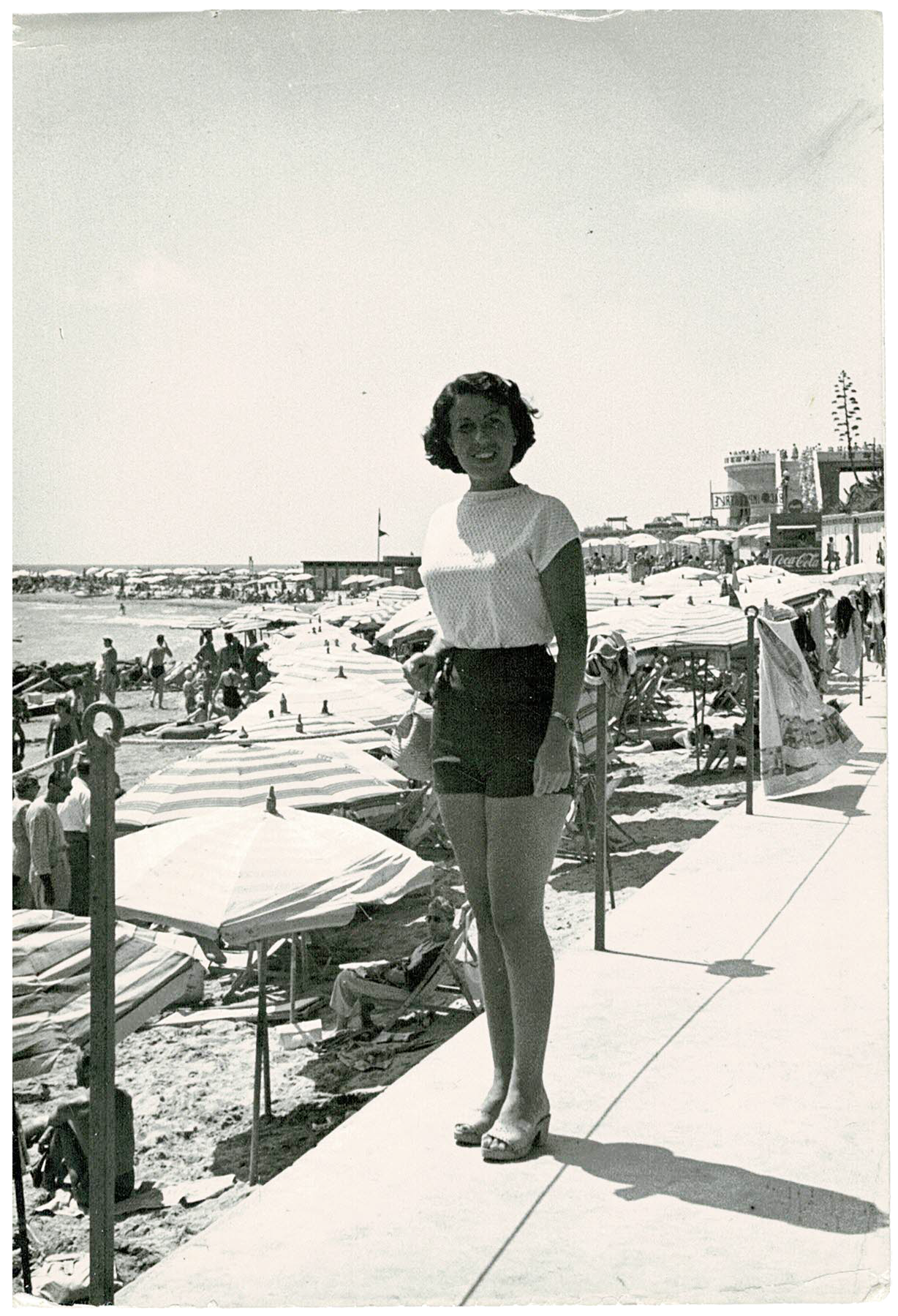









Installazione al Forte Santa Tecla, Sanremo, 2023
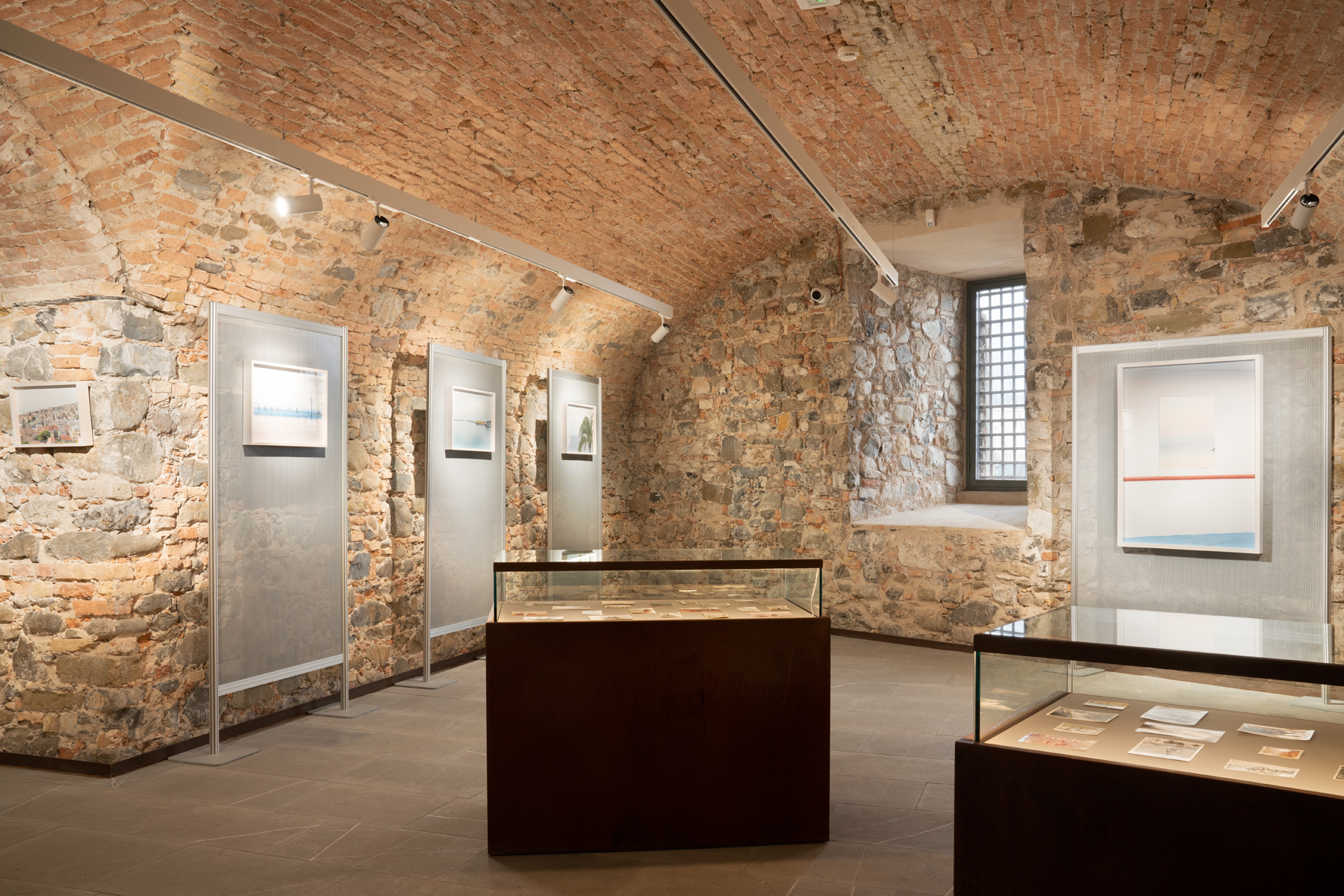


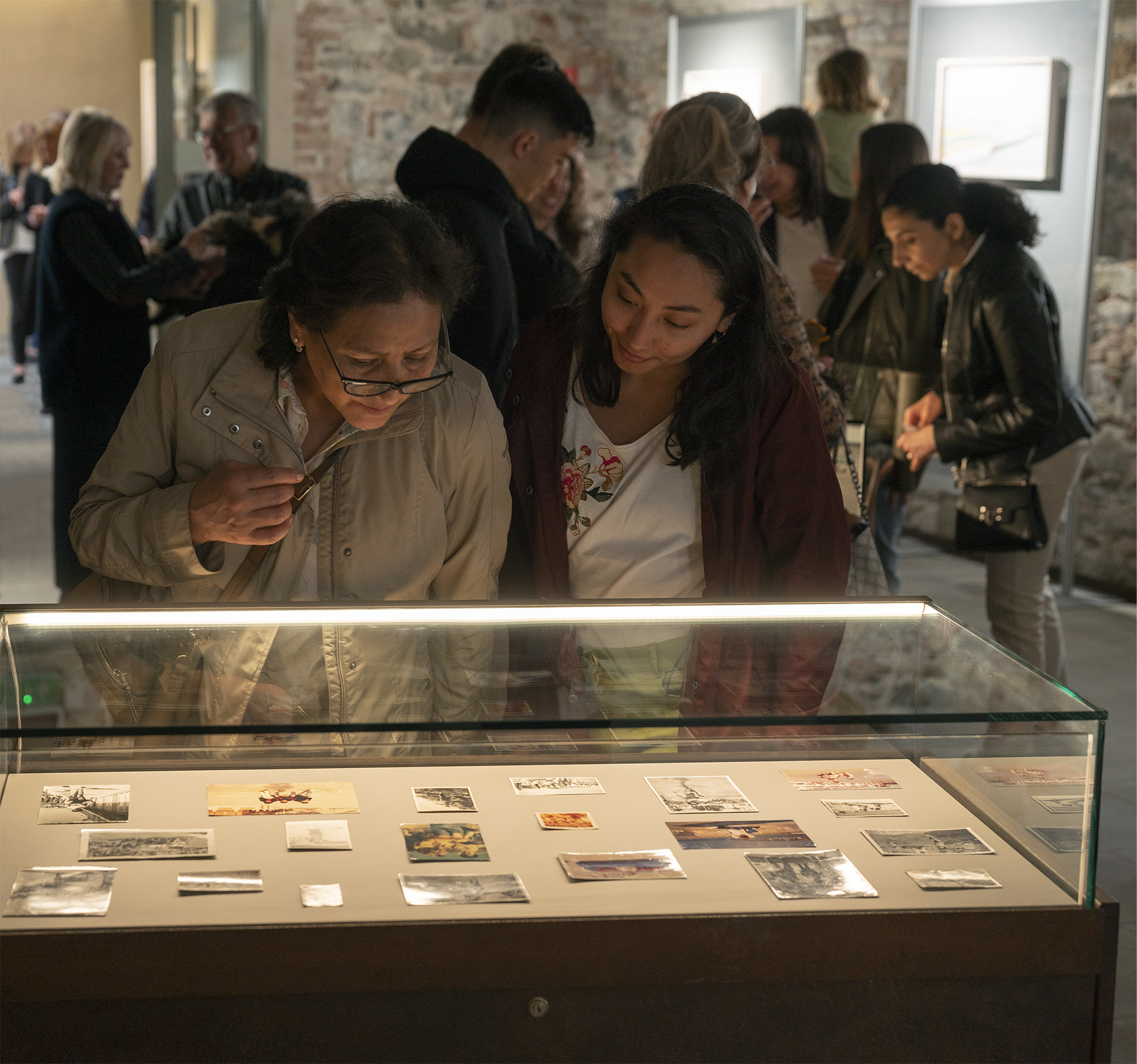
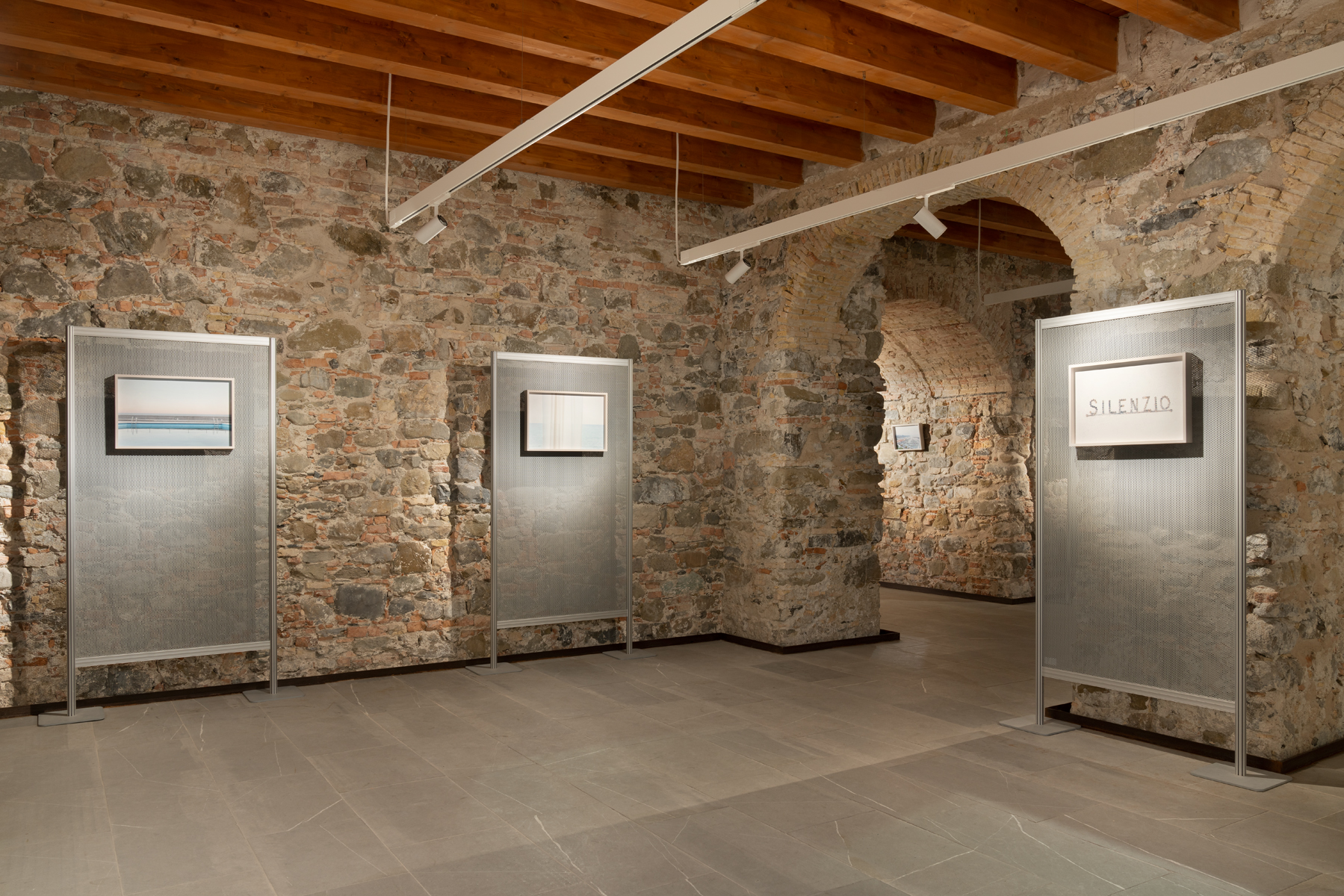

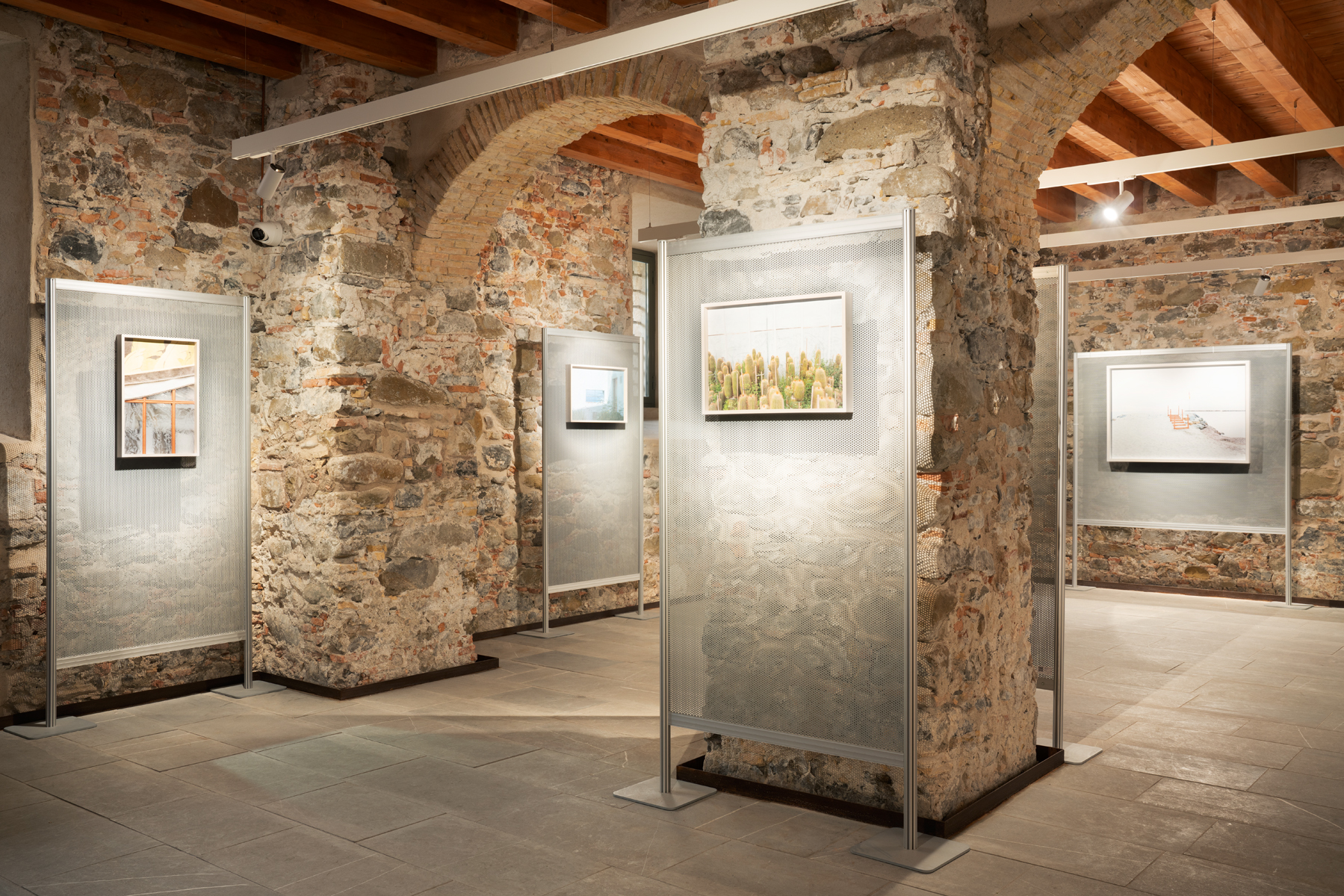
(exerpt from the interview)
Laboratorio Sanremo
Paolo Riolzi and Danilo Signorello / dialogue between the artist and the journalist
D. What is Laboratorio Sanremo?
P. It is a public project investigating the city of Sanremo. The research project, which started thanks to a commission from Councillors Silvana Ormea (Culture) and Giuseppe Faraldi (Tourism), lasted over two years in search of a true ideal dialogue between the city, the photographic image and the public, in collaboration with the Ministry of Culture, the regional directorate of Museums Liguria and the director of Forte Santa Tecla, Alberto Parodi.
D. How did you approach the project? What did you put of yourself, of your way of doing photography? What did you receive in return?
P. I had the privilege of getting to know the city by doing the inspections with Monica Paracchini who lives and lives in Sanremo, also an architect by training; this allowed me to explore the whole area in depth, including its social landscape, meet people, visit museums, historical buildings, archives, and listen to the stories of some of its citizens. For two years, I alternated photography sessions with meetings and continuous explorations. This way of proceeding derives from the experiences I had with the previous public art projects, Vetrinetta and Casetta Bassa, which built a sort of methodological skeleton, and clearly the embryos of all this derive from my training, from the experience as an assistant I had after graduating with Gabriele Basilico: for two years I travelled with him in Europe. The city and some of its inhabitants gave me back an intense and project-related experience, having the opportunity to tell it through different artistic practices is an exercise that allows me to better understand the urban and social fabric.
D. How is the exhibition structured?
P. The exhibition is structured through different sections. Firstly, that of the photographic investigation, i.e. a series of images taken by me during inspections, meetings, research and dialogues with some of the territory's protagonists. The research is translated into photographs that represent the border between architecture, geography and urban anthropology.
D. A particular way of disseminating visual culture
P. When Nicholas Mirzoeff wrote and published Introduction to Visual Culture in 1999, upon reading the text, one of his statements seemed immediately clear to me: "The world as text has been replaced by the world as image, in this sense visual culture is a tactic of knowledge that serves to study the genealogy and functions of postmodern everyday life." Geography, urban anthropology and sociology have never been in such dialogue as they are today. I would like to add that it no longer makes sense to me to use photography as the sole device precisely because of the fact that visual culture encompasses vast fields and disciplines that cannot be ignored for those concerned with deciphering and restoring the city.
D. And then?
P. Then there is the involvement of citizens through a public project entitled "Di che spiaggia sei?" (What beach are you from?), carried out together with students from the Liceo Musicale Cassini and coordinated by a number of teachers: a collection of photographs taken on the beaches of Sanremo, telling the story of the lidos and the people who inhabited them.
D. Explain further...
P. Just as we select houses to live in, so we select the beaches where we wish to spend our leisure time, particularly if we are not tourists. The beach becomes an extension of the home, a public place that becomes familiar. These are places that our loved ones have often chosen for us. We grow up with people who are initially strangers and gradually become part of our family: Mauro the lifeguard, Carla the beach umbrella neighbour, Luigi the big cousin of our summer friend. Analysing these 'historical' photographs allows us to dig into our collective memory, reminding us that we too are protagonists of a fan base that we often defend with pride. The workshop is the instrument for managing the entire process: the working group is composed of myself, professors Lia Motta and Patrizia Magnoni, who have the task of coordination, and the students of the Liceo Cassini who met the people, collected the photographs, and conducted interviews.
Laboratorio Sanremo
Paolo Riolzi and Danilo Signorello / dialogue between the artist and the journalist
D. What is Laboratorio Sanremo?
P. It is a public project investigating the city of Sanremo. The research project, which started thanks to a commission from Councillors Silvana Ormea (Culture) and Giuseppe Faraldi (Tourism), lasted over two years in search of a true ideal dialogue between the city, the photographic image and the public, in collaboration with the Ministry of Culture, the regional directorate of Museums Liguria and the director of Forte Santa Tecla, Alberto Parodi.
D. How did you approach the project? What did you put of yourself, of your way of doing photography? What did you receive in return?
P. I had the privilege of getting to know the city by doing the inspections with Monica Paracchini who lives and lives in Sanremo, also an architect by training; this allowed me to explore the whole area in depth, including its social landscape, meet people, visit museums, historical buildings, archives, and listen to the stories of some of its citizens. For two years, I alternated photography sessions with meetings and continuous explorations. This way of proceeding derives from the experiences I had with the previous public art projects, Vetrinetta and Casetta Bassa, which built a sort of methodological skeleton, and clearly the embryos of all this derive from my training, from the experience as an assistant I had after graduating with Gabriele Basilico: for two years I travelled with him in Europe. The city and some of its inhabitants gave me back an intense and project-related experience, having the opportunity to tell it through different artistic practices is an exercise that allows me to better understand the urban and social fabric.
D. How is the exhibition structured?
P. The exhibition is structured through different sections. Firstly, that of the photographic investigation, i.e. a series of images taken by me during inspections, meetings, research and dialogues with some of the territory's protagonists. The research is translated into photographs that represent the border between architecture, geography and urban anthropology.
D. A particular way of disseminating visual culture
P. When Nicholas Mirzoeff wrote and published Introduction to Visual Culture in 1999, upon reading the text, one of his statements seemed immediately clear to me: "The world as text has been replaced by the world as image, in this sense visual culture is a tactic of knowledge that serves to study the genealogy and functions of postmodern everyday life." Geography, urban anthropology and sociology have never been in such dialogue as they are today. I would like to add that it no longer makes sense to me to use photography as the sole device precisely because of the fact that visual culture encompasses vast fields and disciplines that cannot be ignored for those concerned with deciphering and restoring the city.
D. And then?
P. Then there is the involvement of citizens through a public project entitled "Di che spiaggia sei?" (What beach are you from?), carried out together with students from the Liceo Musicale Cassini and coordinated by a number of teachers: a collection of photographs taken on the beaches of Sanremo, telling the story of the lidos and the people who inhabited them.
D. Explain further...
P. Just as we select houses to live in, so we select the beaches where we wish to spend our leisure time, particularly if we are not tourists. The beach becomes an extension of the home, a public place that becomes familiar. These are places that our loved ones have often chosen for us. We grow up with people who are initially strangers and gradually become part of our family: Mauro the lifeguard, Carla the beach umbrella neighbour, Luigi the big cousin of our summer friend. Analysing these 'historical' photographs allows us to dig into our collective memory, reminding us that we too are protagonists of a fan base that we often defend with pride. The workshop is the instrument for managing the entire process: the working group is composed of myself, professors Lia Motta and Patrizia Magnoni, who have the task of coordination, and the students of the Liceo Cassini who met the people, collected the photographs, and conducted interviews.
D. What was the experience of working with such young boys and girls? What was your approach to them and their approach to photography?
P. I have been involved in teaching for as long as I can remember, I started working with the Politecnico di Milano when I was still a second-year architecture student, then, once I graduated, I continued teaching as an adjunct professor of Photography and Visual Culture in various Universities and Academies. Education is an important component of my career path. Working with students is an integral part of the process of almost all my projects. Training young people means activating pathways to make territories more permeable to cultural processes.
D. Finally, a short on Alfredo Moreschi
P. The activity of the Moreschi studio has been narrating the city of Sanremo for five generations, since 1927. In exhibition a short film is presented, which through the words of Moreschi himself and a series of archive documents, retraces a significant part of the city's history. Photographs, film clips, Cineclub and Fotoclub productions, make it possible to relive the Sanremo of the 1950s and 1960s.
D. What objectives have you set yourself with Laboratorio Sanremo?
P. To encourage dialogue between people and generations, favouring the meeting and sharing of time; to identify the elements of collective identity in order to relate social memory and a sense of belonging; to design a process of participation in the cultural life of the territory; to increase the number of contemporary art users; to consolidate the relationship between citizens, culture and public institutions.
D. Were you able to reach them? All or some of them?
P. I was not able to work as I would have liked on the Pigna, the historic core of the city, its heart. I met several times with some members of local associations, we hypothesised a workshop. The project consists of the construction of a methodological model with the aim of systemising bottom-up initiatives by creating the structure of a programme of actions, flexible and articulated over time. The 'Pigna' project aims to create social cohesion through cultural/social projects involving participative processes of citizenship involvement.
D. Why a location like Forte Santa Tecla?
P. The Forte Santa Tecla exhibition space is the place where this dialogue takes shape and is presented to the public through the use of several languages and different ways of producing and using photography: the artistic gaze, the vernacular photography of family photos and the professional activity of the Moreschi studio.
D. An experience you think you will do again?
P. Of course, every time you learn something and hope to have left some positive trace on the territory where you worked. In Sanremo, for example, unlike other times where my work was mediated by an institution, a museum, this time relations with institutions and politics were managed directly by me and this made the work more complex but also richer in experiences. Ideally, as was the case with the Vetrinetta project, realised with two museums, Museion Bolzano 2012, Mufoco Milan 2015, this project too can be replicated in other cities.
P. I have been involved in teaching for as long as I can remember, I started working with the Politecnico di Milano when I was still a second-year architecture student, then, once I graduated, I continued teaching as an adjunct professor of Photography and Visual Culture in various Universities and Academies. Education is an important component of my career path. Working with students is an integral part of the process of almost all my projects. Training young people means activating pathways to make territories more permeable to cultural processes.
D. Finally, a short on Alfredo Moreschi
P. The activity of the Moreschi studio has been narrating the city of Sanremo for five generations, since 1927. In exhibition a short film is presented, which through the words of Moreschi himself and a series of archive documents, retraces a significant part of the city's history. Photographs, film clips, Cineclub and Fotoclub productions, make it possible to relive the Sanremo of the 1950s and 1960s.
D. What objectives have you set yourself with Laboratorio Sanremo?
P. To encourage dialogue between people and generations, favouring the meeting and sharing of time; to identify the elements of collective identity in order to relate social memory and a sense of belonging; to design a process of participation in the cultural life of the territory; to increase the number of contemporary art users; to consolidate the relationship between citizens, culture and public institutions.
D. Were you able to reach them? All or some of them?
P. I was not able to work as I would have liked on the Pigna, the historic core of the city, its heart. I met several times with some members of local associations, we hypothesised a workshop. The project consists of the construction of a methodological model with the aim of systemising bottom-up initiatives by creating the structure of a programme of actions, flexible and articulated over time. The 'Pigna' project aims to create social cohesion through cultural/social projects involving participative processes of citizenship involvement.
D. Why a location like Forte Santa Tecla?
P. The Forte Santa Tecla exhibition space is the place where this dialogue takes shape and is presented to the public through the use of several languages and different ways of producing and using photography: the artistic gaze, the vernacular photography of family photos and the professional activity of the Moreschi studio.
D. An experience you think you will do again?
P. Of course, every time you learn something and hope to have left some positive trace on the territory where you worked. In Sanremo, for example, unlike other times where my work was mediated by an institution, a museum, this time relations with institutions and politics were managed directly by me and this made the work more complex but also richer in experiences. Ideally, as was the case with the Vetrinetta project, realised with two museums, Museion Bolzano 2012, Mufoco Milan 2015, this project too can be replicated in other cities.